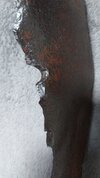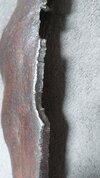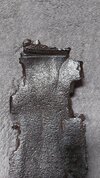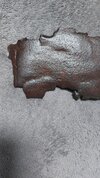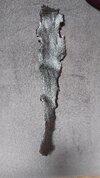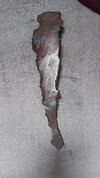Hello Group, I am looking for help identifying this piece of shrapnel. I am new to this forum and have seen similar pieces posted. It was retrieved from an outbuilding in a rural area close to where a German bomb exploded in 1941.
British Ordnance Collectors Network
You are using an out of date browser. It may not display this or other websites correctly.
You should upgrade or use an alternative browser.
You should upgrade or use an alternative browser.
Ww2 German bomb identification
- Thread starter Max
- Start date
Well not anything - Incendiary B1 and family may be excluded due to the size and shape of the fragments  , buy beyond that these can be anything - and this forum is not the suitable place for identifying such artefacts.
, buy beyond that these can be anything - and this forum is not the suitable place for identifying such artefacts.
Only a mettalurgical physico-chemical analysis could help you in narrowing the identification frame.
This, BTW is not a new practice. The Germans in 1940-41 did a number of physico-chemical analysis of some French Bombs enveloppes to try and understand their potential effects.
But to come back to your question - as Fusse2004 said quite rightly - this kind of artefact can be anything
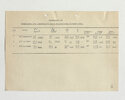
Only a mettalurgical physico-chemical analysis could help you in narrowing the identification frame.
This, BTW is not a new practice. The Germans in 1940-41 did a number of physico-chemical analysis of some French Bombs enveloppes to try and understand their potential effects.
But to come back to your question - as Fusse2004 said quite rightly - this kind of artefact can be anything

The measurements and thickness would help.Hello Group, I am looking for help identifying this piece of shrapnel. I am new to this forum and have seen similar pieces posted. It was retrieved from an outbuilding in a rural area close to where a German bomb exploded in 1941.
47 cm length x 10 cm width x 5 cm thicknessThe measurements and thickness would help.
So This exlude the SC series - SC10, SC50 and SC250 walls were under 40mm maximal wall thickness and SC500 was over 60mm minimal wall thickness - quite a lot of other possibilities of German bombs remain, without forgetting aerial mines (though this fragment having been found in a rural area, we may probably exclude these last ones).Thickness 5cm
There is also the remnants of what looks like red and green paint visible.So This exlude the SC series - SC10, SC50 and SC250 walls were under 40mm maximal wall thickness and SC500 was over 60mm minimal wall thickness - quite a lot of other possibilities of German bombs remain, without forgetting aerial mines (though this fragment having been found in a rural area, we may probably exclude these last ones).
i think its from a projectile

